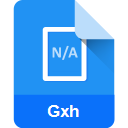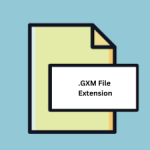.CATPART File Extension

CATIA V5 Part File
| Developer | Dassault Systemes |
| Popularity | |
| Category | CAD Files |
| Format | .CATPART |
| Cross Platform | Update Soon |
What is an CATPART file?
CATIA V5, developed by the French company Dassault Systèmes, is a powerful CAD software utilized across various industries, including automotive, aerospace, and engineering. At the heart of CATIA V5 lie .CATPART files, which serve as the building blocks for creating 3D part models within the software environment.
These files encapsulate geometric data, parametric features, constraints, and metadata necessary for defining and manipulating 3D solid models.
More Information.
The development of CATIA V5 marked a significant milestone in the evolution of CAD software. Prior to its introduction, CAD systems were often characterized by complex interfaces and limited capabilities.
CATIA V5 aimed to address these shortcomings by offering a user-friendly interface, advanced modeling tools, and seamless integration with other engineering disciplines such as finite element analysis and computer-aided manufacturing.
The primary purpose of .CATPART files were to enable engineers and designers to design 3D parts with precision and efficiency.
These files served as the foundation upon which intricate assemblies and products could be constructed, allowing users to incorporate parametric features, apply engineering constraints, and simulate real-world behavior.
Origin Of This File.
The .CATPART file extension emerged alongside the inception of CATIA V5, which debuted in the late 1990s. Dassault Systèmes designed CATIA V5 to provide engineers and designers with an intuitive and feature-rich platform for product design, simulation, and manufacturing.
As part of this ecosystem, .CATPART files were conceived to facilitate the creation, modification, and analysis of individual parts within complex assemblies.
File Structure Technical Specification.
.CATPART files adhere to a structured format that encapsulates various elements necessary for defining a 3D part model.
At its core, a .CATPART file consists of geometric data represented in a mathematical format such as boundary representation (B-rep) or constructive solid geometry (CSG).
Additionally, .CATPART files store information about parametric features, such as extrusions, fillets, and chamfers, along with their respective dimensions and constraints.
Internally, .CATPART files are organized into a hierarchical structure, with each component representing a distinct aspect of the part model. This hierarchical arrangement facilitates the manipulation and editing of individual features without impacting the overall design intent.
.CATPART files may include metadata such as authorship, revision history, and material properties, providing valuable context for collaborative design workflows.
How to Convert the File?
Converting .CATPART files to alternative formats can facilitate interoperability and data exchange between different CAD systems. Several methods exist for converting .CATPART files, including:
- Exporting to Neutral Formats: CATIA V5 allows users to export .CATPART files to neutral exchange formats such as STEP (Standard for the Exchange of Product Data) or IGES (Initial Graphics Exchange Specification). These formats are widely supported by various CAD software packages, enabling seamless data transfer.
- Using Third-Party Converters: Several third-party software tools specialize in converting .CATPART files to formats compatible with other CAD systems. These converters may offer additional features such as batch processing, geometry repair, and format customization.
- Direct Translation: Some CAD software platforms provide native support for importing .CATPART files directly, allowing users to retain design intent and parametric features during the conversion process. However, compatibility issues may still arise due to differences in software implementations.
Advantages And Disadvantages.
Advantages:
- Parametric Modeling: .CATPART files support parametric modeling techniques, allowing users to define relationships between geometric features and parameters. This enables iterative design changes and facilitates design optimization.
- Integration with CATIA V5: As the native file format of CATIA V5, .CATPART files seamlessly integrate with other components of the software suite, including assembly files (.CATProduct) and drawing files (.CATDrawing). This ensures consistency and compatibility throughout the design process.
- Versatility: .CATPART files can represent a wide range of part geometries, from simple prismatic shapes to complex freeform surfaces. This versatility makes them suitable for diverse applications across industries.
Disadvantages:
- Vendor Lock-In: Since .CATPART files are proprietary to CATIA V5, they may pose challenges when collaborating with stakeholders using different CAD software platforms. Interoperability issues may arise when exchanging data between CATIA V5 and other systems.
- Complexity: The hierarchical structure of .CATPART files, while beneficial for organizing design data, can also lead to complexity, especially in large assemblies. Managing feature dependencies and resolving design conflicts may require advanced skills and expertise.
- Resource Intensive: Working with .CATPART files in CATIA V5 may require substantial computational resources, particularly for handling complex geometries or performing simulations. This can impact performance on lower-end hardware configurations.
How to Open CATPART?
Open In Windows
- If CATIA V5 is installed, simply double-click on the CATPART file, and it should open directly in CATIA V5.
- Alternatively, launch CATIA V5, go to the File menu, select Open, and then browse to the location of the CATPART file to open it.
Open In Linux
- Use virtualization software like VirtualBox or VMware to run a virtualized instance of Windows on your Linux system. Install CATIA V5 within the virtualized environment and then open the CATPART file as you would on Windows.
- Investigate compatibility layers such as Wine, which may provide limited support for running CATIA V5 on Linux. Note that this approach may not offer full functionality and stability.
Open In MAC
- Utilize virtualization software such as Parallels Desktop or VMware Fusion to run a virtualized instance of Windows on your Mac. Install CATIA V5 within the virtual machine and then open the CATPART file as you would on Windows.
- Explore compatibility layers like Wine or CrossOver, which may offer partial support for running CATIA V5 on macOS. Keep in mind that these solutions may have limitations and may not provide a seamless experience.
Open In Android
- Transfer the CATPART file to a Windows-based computer or virtualized environment and open it using CATIA V5 as described earlier.
- Utilize cloud-based CAD viewing and collaboration platforms that offer support for CATPART files. Upload the file to the platform via a web browser on your Android device to view and interact with the model.
Open In IOS
- Transfer the CATPART file to a Windows-based computer or virtualized environment and open it using CATIA V5.
- Use cloud-based CAD viewing and collaboration platforms compatible with iOS devices. Upload the CATPART file to the platform via a web browser on your iPhone or iPad to view and interact with the model.













